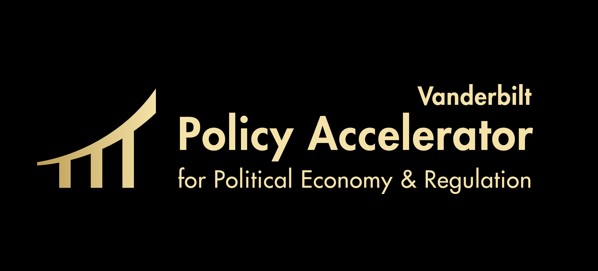Paul Erdos was a brilliant and influential mathematician who co-authored articles with so many scholars that mathematicians now talk about their degrees of separation from Erdos (pronounced air-dish) as a sign of their connection to the hub of mathematics. Vanderbilt law professors Tracey George and Paul Edelman were having a casual conversation about the growing trend of collaboration in legal scholarship when they decided to pursue a project both serious and playful: Determine if there was a legal Erdos – a scholar whose work was so prolific, influential and broad in scope that he or she served as a hub for the network of legal collaboration.
“There is a 40-year tradition in mathematics of referring to one’s Erdos number,” Edelman explains. “Erdos had more than 500 coauthors, and another 8,000 who were two steps away.” An Erdos number of 1 means a scholar co-authored with Erdos; an Erdos 2 is a scholar who did not coauthor with Erdos, but did collaborate with someone who did.
In their paper, which also pays homage to John Guare’s 1990 play, “Six Degrees of Separation,” and the popular trivia game “Six Degrees of Kevin Bacon,” Professors Edelman and George ultimately conclude that University of Chicago Professor Cass Sunstein is the legal Erdos. “He’s an incredibly prolific scholar who is unusual in both the scope of his legal writing and number of coauthors,” Edelman says.
Professor George admits the paper, entitled “Six Degrees of Cass Sunstein: Collaboration Networks in Legal Scholarship,” ended up “being more work than we had anticipated. Law, unlike other fields, does not have a computer database that readily lends itself to this kind of research, so we had to collect data manually.”
She notes that Vanderbilt University Distinguished Professor W. Kip Viscusi is a Sunstein 1, and law professor Joni Hersch a Sunstein 2.
Professor Edelman, who is also a professor of mathematics, notes that the paper doesn’t resolve the question of why collaboration in legal scholarship lags behind collaboration in other disciplines. The answer may lie in the fact that legal scholars tend to collaborate with scholars in a wide array of other disciplines, from mathematics and economics to history and literature, while in other disciplines collaboration tends to be within the same field. “We don’t know if we’re looking at the early stages of legal collaboration, or if this is the way legal collaboration is,” he says.
The paper, which has made several top 10 lists on SSRN, will be published in a forthcoming edition of The Green Bag.
Read “Six Degrees of Cass Sunstein: Collaboration Networks in Legal Scholarship”
Read comments on the paper at the links below:
What Is your Sunstein Number? – The Chronicle of Higher Education


